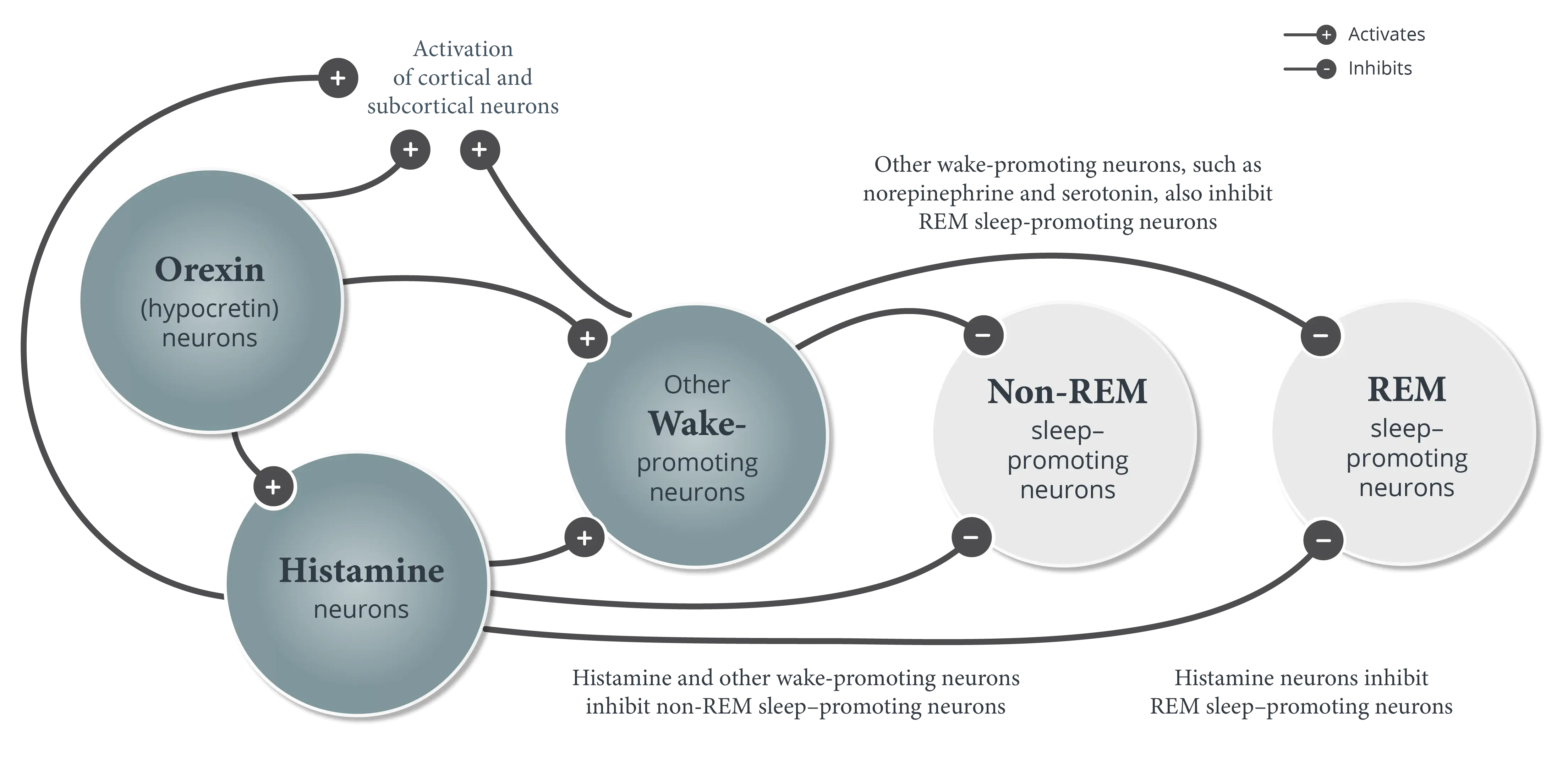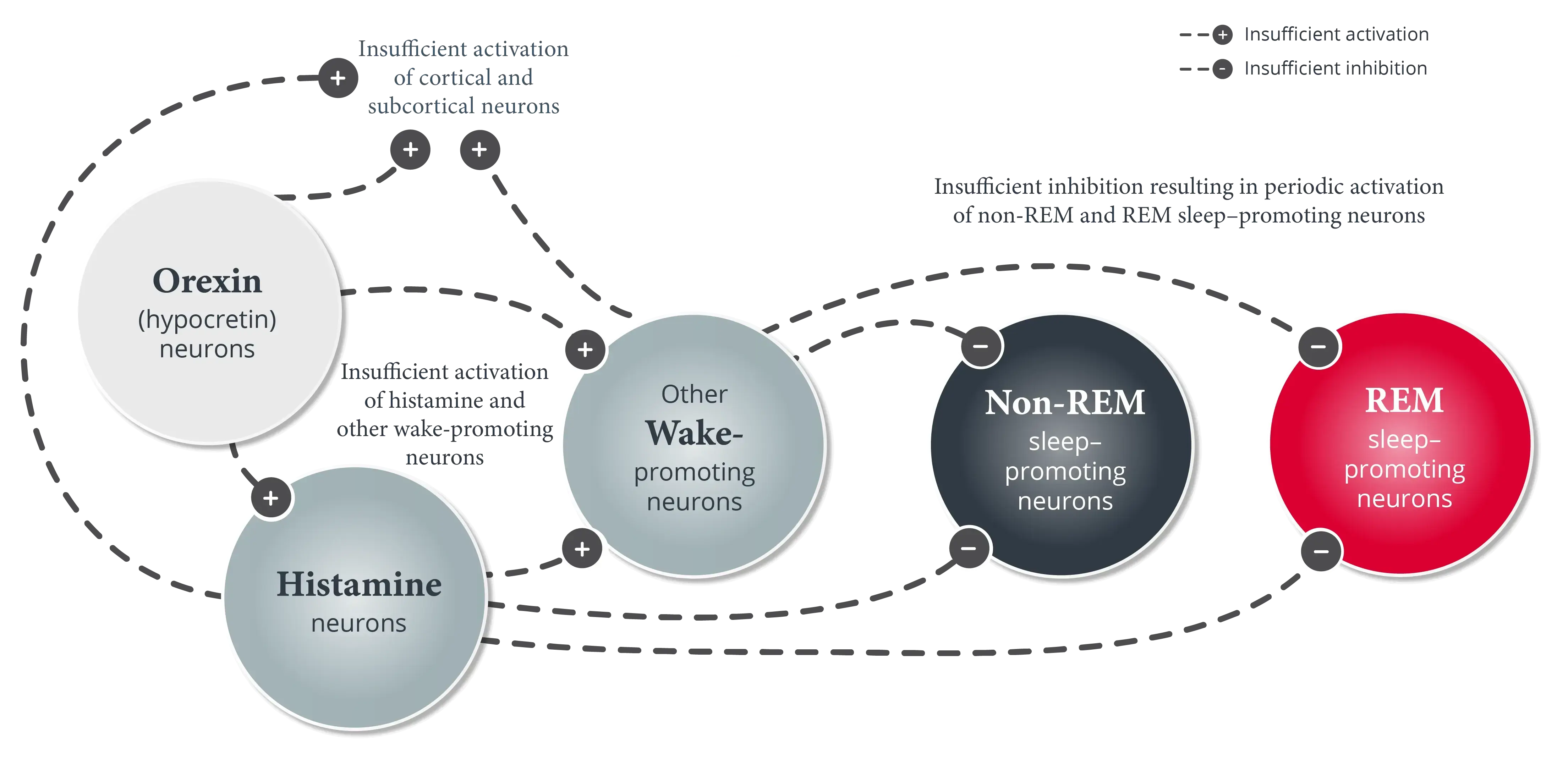

Symptoms as Described by Patients and Caregivers
This content was developed using literature published in peer-reviewed journals.
Symptoms as Described by Patients and Caregivers
This content was developed using literature published in peer-reviewed journals.
Overview
The symptoms of narcolepsy in pediatric patients, as well as young adults, go beyond the physical; they can cause feelings of anxiety and social isolation, as well as place restrictions on social engagement.1,2
A survey was completed by 116 parents of children 22 years of age or younger with narcolepsy and by 35 patients between 12 and 22 years of age with narcolepsy.1
Patients and parents identified the most frequent and problematic narcolepsy symptoms as1:
- Excessive daytime sleepiness (EDS)
- Disturbed nighttime sleep
- Depression/mood challenges
When asked about the most psychological and social challenges of living with narcolepsy, both patients and parents reported difficulty focusing/memory issues as the primary concern. Patients also struggle greatly with worrying about the future, schoolwork, and getting easily upset due to their narcolepsy.1
Additionally, parents answered open-ended questions about how narcolepsy has affected their children1:
One parent said that if her son did not have narcolepsy,
“He would be able to attend school more frequently…and he would be able to participate in normal teenage activities.”
Another said narcolepsy negatively affects her son’s time management.
“He is always struggling against time as he sleeps more at night and naps during the day.”
Several parents also spoke to their children’s social isolation due to narcolepsy. One shared,
“He doesn’t like to go anywhere, participate in sports, attend events, he’s antisocial, dislikes school, has severe anxiety…”
Adolescents with narcolepsy may struggle with balancing the need to manage symptoms while still maintaining relationships with friends and peers and participating in age-appropriate activities, such as playing sports or driving.2
In a study that interviewed 14 patients (aged 12 to 17 years) with narcolepsy and their parents, the patients expressed frustration, sharing that their social lives sometimes felt defined by narcolepsy. Narcolepsy symptoms often required the patients to plan ahead, prioritize fitting sleep into their schedules, and change or even cancel their plans, which places further restrictions on social relationships.2
When asked about social relationships, one patient shared,
“A lot of times I won’t text them back. I won’t answer them because I just don’t have energy in me...I'll make plans with them, and then…I’ll feel too tired, or I just won’t be feeling it, and then I’ll just cancel on them last minute.”
One patient’s parent shared,
“What he tends to do is just avoid those situations or not go at all. Or leave early. Which has an impact over time when you feel like you’re the one that’s leaving all the time.”
When it comes to physical activity, patients are generally able to participate, but with limitations that their peers don’t face. One parent described her child as being isolated even while part of a basketball team.
“He needed a lot of breaks…like when the kids would high-five or cheer together, he was kind of on the outside, like sitting down resting, not in the middle of all the hustle and bustle.”2
Another patient with narcolepsy with cataplexy shared that they avoid the deep end while swimming because they fear drowning if they happen to laugh while in the pool.2
When asked about the impact of narcolepsy on driving, one patient said,
“Sometimes me and my friends go out later at night 'til 10 PM or 10:15 PM, so I never drive. Because normally I’m going to bed at this time, so [I'd] just rather not take any chances.”2
Another parent described her child as missing out on teen “rites of passage,” like driving, and being saddened by that.2
When asked about healthcare providers, some patients and their parents expressed a desire for their doctors to give more acknowledgement to the challenges adolescents face. Adolescents indicated their priorities may not be the same as those of adult patients, and that their needs can change every year as they continue to grow and develop. Overall, they expressed wanting to feel like their narcolepsy is not the “be-all, end-all” of their lives.2
In yet another study that interviewed 18 patients (aged 10 to 17 years) with narcolepsy, all of them talked about how important it was to identify behavioral strategies that worked for them individually as part of helping to manage narcolepsy symptoms.3
A few examples of strategies shared by patients3:
One said,
“If I feel like my energy’s drained or something like that…it’s like I’m recharging my energy, like I’m a battery…I take my nap.”
Another voiced,
“I try and just distract myself as much as I can, just really with anything. I do enjoy going for bike rides, 4 or 5 times a week.”
Some patients with cataplexy reported attempts to control laughing, a common trigger for cataplexy.3
One patient shared,
"I got more into a serious phase, and then...I lost my laugh as much as possible. I stopped crying...so all of a sudden, I cut all of it off. To me, it was a wrong decision...it cut me away from a lot of people."
References
- Ingram DG, Jesteadt L, Crisp C, Simon SL. Perceived challenges in pediatric narcolepsy: a survey of parents, youth, and sleep physicians. J Clin Sleep Med. 2021;17(1):13-22.
- Zhou ES, Revette A, Heckler GK, Worhach J, Maski K, Owens JA. Building a deeper understanding of social relationship health in adolescents with narcolepsy disorder. J Clin Sleep Med. 2023;19(3):491-498.
- Xiao L, Chen A, Parmar A, et al. Narcolepsy treatment: voices of adolescents. Behav Sleep Med. 2022;20(2):260-268.



